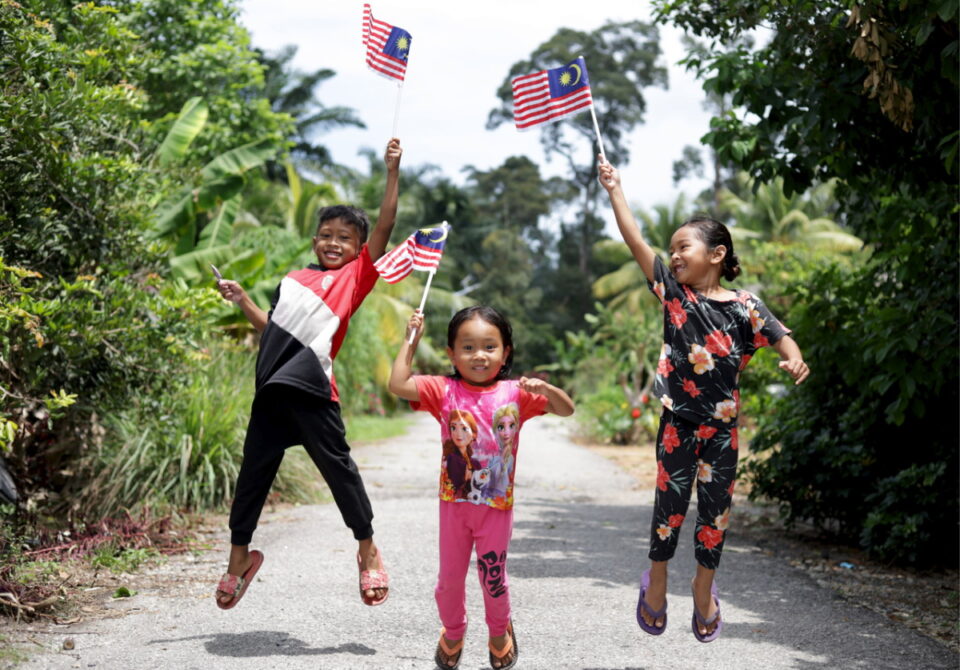SEPANG, Aug 24 — Kampung Orang Asli Bukit Bangkong in Sungai Pelek, near here, hardly looks like an Orang Asli settlement.
It may be surrounded by forests and rolling hills but the villagers live in concrete houses and enjoy amenities such as electricity and water supplies.
They have also clearly integrated into mainstream society, as a group of journalists found out during a recent media trip to their village organised by the Information Department to take a look at their preparations to celebrate National Day on August 31.
The indigenous people residing in this village and in surrounding areas belong to the Mah Meri community, which is one of the 18 Orang Asli ethnic groups inhabiting Peninsular Malaysia. The Mah Meri group mostly lives on the west coast of the peninsula, particularly on Carey Island, Selangor.
Merdeka spirit
The Merdeka spirit is very much evident in Kampung Bukit Bangkong, with some of the families there having already hoisted the Jalur Gemilang in the front yard of their homes and others making arrangements to get the national flag.
In fact, the villagers have also been carrying out a series of activities since early this month to commemorate the nation’s independence and the climax is set to take place on the eve of August 31. The events involve the participation of all the villagers including the children.
Kampung Bukit Bangkong Tok Batin or headman Taha Akhir, 55, said the Orang Asli people have always celebrated the nation’s independence as their own ancestors had played a role in the struggle to liberate this country from the clutches of the colonialists.
“Many of them (ancestors) laid down their lives for our freedom,” he said.
Among the activities his community has planned in the run-up to the 65th National Day are a flag colouring contest for children aged below 10 as well as badminton, ketupat weaving and patriotic karaoke competitions.
“We’re also planning to perform our traditional Mah Meri dance called tengkeng. It will be performed by female dancers who will dance to the rhythm of our songs played using a traditional musical instrument made from bamboo sticks as well as the violin and brass gong,” he said.
Inculcating love for the nation in children
A teacher at the children’s nursery (Taman Bimbingan Kanak-Kanak or tabika) at Kampung Bukit Bangkong, Mistipah Wagiman, 53, believed that continuous efforts must be made to inculcate love for the nation in their children in order to produce new generations of Mah Meri who have the patriotic spirit deeply embedded in them.
She felt that youngsters who have access to modern technology may be easily swayed by negative elements via social media, which can be detrimental to the interests of the nation.
“For educators like me, it’s our duty to train the young generation to appreciate our nation’s independence,” she said, adding that she is doing her part by sowing the seeds of love for the nation in her class of 18 young children.
“In fact, we also came up with a special subject which we are teaching this whole month (August). It includes an introduction to the Jalur Gemilang and teaching the children what it represents, and telling them all about our nation’s founding fathers.
“We have also been having marching sessions where we march while singing patriotic songs. It’s important to introduce our children to these things because if we don’t do it, we may in the future face a shortage of leaders of high calibre who can defend our nation against any threat. It’s important for all Malaysians, regardless of race and religion, to protect the freedom that we have now.”
History
The ancestors of the Mah Meri people now living in Kampung Bukit Bangkong and elsewhere in Selangor, notably in the Sepang district, are known to have been living in that part of the peninsula since the 15th century. In the early days, they lived in remote parts of the jungle and in coastal areas.
Marin Mungai, 50, who is Kampung Bukit Bangkong’s village security consultative committee chairman, said their forefathers originally lived in the coastal area in Kuala Pantai Jengkuk (in the Sepang area) where they survived by catching fish, cockles, crabs and sea snails.
They were later forced to move inland due to frequent attacks by pirates, eventually settling down in the interior of a jungle where they cleared the bushes and built a settlement which they called Ulu Chuchoh.
“While living in Ulu Chuchoh, the British government ordered them to move here (Kampung Bukit Bangkong). This happened during the Japanese invasion during the 1940s,” he related, adding that the name for their village was derived from the numerous bangkong trees growing at the foot of a nearby hill.
The seeds of the bangkong fruit, which looks like cempedak, are edible when boiled.
“The bangkong fruit is one of our sources of income,” added Marin.
According to village headman Taha, there are about 1,000 Mah Meri people residing in three Orang Asli villages in the Sepang area, namely Kampung Bukit Bangkong, Kampung Ulu Chuchoh and Kampung Sungai Belankan.
He said they eke out a living by cultivating oil palm and working as fishermen and contractors. Many of them are also employed as general workers at the Kuala Lumpur International Airport and grow their own cash crops such as bananas, vegetables, tapioca and sweet potato.
“We earn our own income because, in our culture, we don’t like to depend too much on the sympathy of others,” he said, adding that the Orang Asli Development Department (Jakoa) often provides them with aid in the form of livestock, oil palm seeds and others for their agricultural ventures.
Taha, who was appointed Kampung Bukit Bangkong headman six years ago, said many children from their village have succeeded in pursuing their higher studies in local and foreign universities with Jakoa’s assistance and have become doctors, engineers, teachers and soldiers.
— Bernama





